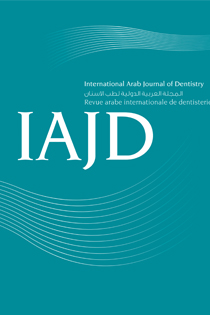Abstract
The aim of the present paper is to carry out a retrospective epidemiological study over a period of ten years on patients with temporo-mandibular disorders (TMD), referred to the TMD and Orofacial Pain Unit, the department of Fixed Prosthodontics, at the Faculty of Dental Medicine of Saint Joseph University, Beirut. This study focuses on the prevalence of sex, age, etiologies and risk factors, as well as the different diagnoses and pathologies of temporomandibular joints (TMJ), and the different treatments considered depending on each case studied. All the patients’ files examined at the TMD and Orofacial Pain Unit between 2006 and 2016 were gathered and reviewed thoroughly. 237 patients of mean age 33.41 ± 14.65 years (amplitude: 11-73 years) participated in the study. The vast majority of participants (79.3%) were women. The purpose of the visit in the entire sample was mainly pain (62.9%), with more women than men consulting because of pain (women: 66.7% v / s men: 47.9%) (p = 0.016). Headache was the most common symptom that was reported (55.7%). Other symptoms included: backache, neckache, posture problems and vertigo. Clenching of the jaws was the most commonly reported risk factor by participants (45.7%). No significant difference was noted between women and men (p> 0.05). Difference in physical examination was also not significant between men and women (p> 0.05). Muscle tension (35.2%), spasm (25.4%) and disc displacement (40.4%) were the most commonly reported diagnoses. The most frequent treatments offered to patients consisted in the stabilization splint (22.4%), medications (18.1%) and the retro-incisal plan (17.7%). Despite its limitations, the present work reflects a general view of our population. Further studies may lead to the creation of a general test that can be adopted systematically for the detection of TMD disorders.

